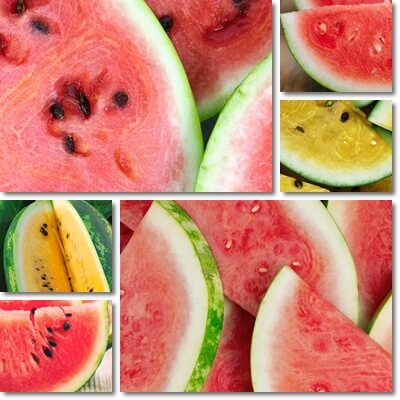The white part of the watermelon rind is both edible and a source of surprising uses and benefits for health. Hydrating and filling, but low in sugar, it supports healthy weight loss and is good for diabetics and anyone looking to have lower blood sugar levels.
The white part of watermelon is high in the amino acid citrulline and boasts a range of circulatory benefits, including benefits for blood pressure, poor blood flow, angina and benefits for muscles and exercise performance.
While it’s commonly eaten as it is, the white part of watermelon can also be cooked or pickled together with the outer skin, made into jam, juice or dried and ground and used to make watermelon rind supplements.
Is the white part of watermelon good for you?
The white part of the watermelon is both edible and good for you. Its benefits stem primarily from its good content of citrulline, an amino acid with antioxidant and blood pressure lowering properties. Other benefits result from dietary fiber, biologically active pigmented and colorless antioxidants and other polyphenols present naturally in it.
Find out more about what is the white part of watermelon rind.

White part of watermelon: benefits
Hydrating properties
The white part of watermelon rind along with the sweet flesh are both over 90% water and help keep you hydrated, with benefits for dehydration-related tiredness, fatigue, dizziness, lethargy and headaches.
Relieves constipation naturally
A good source of fiber and high in water, the white part of watermelon has mild laxative properties, stimulating peristalsis and softening stools which results in more regular bowel movements that are easy to pass for natural constipation relief.
Low in sugar
Versus the flesh which is as sweet as can be with over 6 g of sugar/100 g, the white part of watermelon is not sweet at all, an indication of its very low sugar content.
Low in calories
Watermelon flesh is low calorie with only 30 kcal/100 g, but the white part of is even lower in calories than the flesh due to having a significantly lower sugar content.
Benefits for weight loss
A good source of both dietary fiber and water, but a lot lower in sugar than the flesh, the white part of watermelon helps fill you up and curbs hunger with fewer calories, making it good for losing weight.

Benefits for blood sugar control
Because it’s even lower in sugar than the sweet flesh, the white part of watermelon has a lower glycemic value and less of an effect on blood sugar levels in diabetics and non-diabetics alike.
High in citrulline
Watermelon is one of the best natural sources of the amino acid citrulline, and the white part of watermelon is too. Studies show yellow watermelon is highest in citrulline, followed by orange watermelon while red watermelon is the lowest source of all colors, although still a reliable one.
Antioxidant benefits
Citrulline and colorless antioxidants, trace amounts of vitamin C and various polyphenols in the white part of watermelon scavenge free radicals that cause oxidative stress and help prevent, reduce and even repair cell damage.
Benefits for the cardiovascular system
Citrulline in the white part of watermelon has scientifically proven circulatory benefits, notably vasodilating and vasoprotective benefits. The white part of watermelon further contributes to cardiovascular health by helping maintain blood volume and supplying small amounts of electrolytes such as potassium and magnesium.
Benefits for high blood pressure
Citrulline in the white part of watermelon ups production of the amino acid arginine, increasing levels in the blood. Arginine is required for the production of nitric oxide, a cell messenger that circulates in the blood and signals to blood vessel muscles to relax. This improves blood flow and lowers blood pressure numbers. Trace amounts of potassium and magnesium contribute to the anti-hypertensive benefits. Learn more about the benefits of citrulline for high blood pressure.
Benefits for poor blood flow and angina
Nitric oxide synthesized from arginine via citrulline functions as a biological messenger, signaling to blood vessel muscles to relax. This dilates blood vessels and improves blood flow, resulting in benefits for high blood pressure and benefits for angina or chest pain.
Benefits for muscles and exercise performance
Citrulline in the white part of watermelon rind has circulatory benefits such as dilating blood vessels and improving blood flow. This contributes to a better oxygenation of muscles which supports exercise performance. Find out more about how citrulline helps with muscle growth.
Benefits for men
The circulatory benefits of citrulline in the white part of watermelon contribute to better blood flow and better circulatory health which, in men, can help boost stamina. However, effects are minimal, not comparable with those of medication, given normal food intakes.
White part of watermelon: main uses
- The white part of the watermelon rind can be eaten as it is, along with the sweet flesh. It provides modest nutrition and important biologically active components such as the amino acid citrulline.
- You can juice the white part of watermelon together with the sweet colorful flesh to make watermelon juice.
- Alternatively you can make healthy smoothies from watermelon rind white part and flesh and other ingredients of your choice (fruits such as raspberries, leafy greens such as baby spinach etc.).
- The white part of watermelon can be used together with the tough outer green skin to make preserves such as watermelon jam or pickles such as pickled watermelon rind.
- You can candy the white part of a watermelon rind or the whole watermelon rind in the same way you would orange peels.
- The whole of watermelon rind, including the white part, can be cooked as a culinary vegetable (e.g. stewed, stir-fried).
- While uncommon, the white part of a watermelon and outer skin can be used to make watermelon rind tea which was once consumed for its medicinal properties. However, there is a concern for side effects such as pesticide contamination if the watermelon is not from organic agriculture.
- Watermelon rind uses for skin: Apply chilled watermelon rind with the white part on the face for extra hydration and a plump looking, younger skin. You can also apply on burns, or irritated skin after washing for natural relief.
